What Credit Card Should I Get?
When it comes to plastic, there are several different options, so what credit card should I get? Credit card selection can be quite overwhelming, whether it’s no annual fee or extended financing, cash back (statement credit), or airline credit cards with premium perks galore.
But when choosing the right credit card for your needs, the answer isn’t quite so tricky. It all comes down to identifying your unique spending habits and finding a card that best fits them.
You may benefit from a rewards credit card that gives you cash rewards on dining and travel expenses if you tend to rack up expensive dinners for business.
If you frequently fly for work or pleasure, an airline credit card could offer significantly more value than a general-purpose cash-back reward card.
Credit Cards: Best Offers in 2026
In addition to being a common method of paying for goods and services, they also serve as a convenient way to build a financial history and access special perks and bonus rewards – sometimes with an annual fee. Prospective holders now have an abundance of options when it comes to selecting the right one.
Even so, there are some general guidelines that you should keep in mind before committing to any particular deal. If you’re thinking about applying for a new credit card in 2026, we explore some of the most important factors you should take into account when making your decision.
The Platinum Card® from American Express
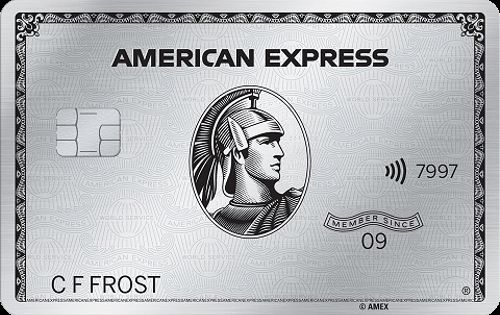
The Platinum Card from American Express is one of the most popular rewards credit card in the world. And while they’re not so great for those with a bad credit limit, the main appeal is its sign-up bonus. If you spend $6,000 in the first six months after you apply, you’ll get 100,000 membership reward points.
They’re worth up to $500 in travel rewards, so if you plan to use your card for eligible purchases like hotels and dining out, this can be a very lucrative offer. The card also comes with a $695 annual fee and foreign transaction fee, but their “pay over time” APR feature means flexible repayment options if needed.
Aeroplan® Credit Card
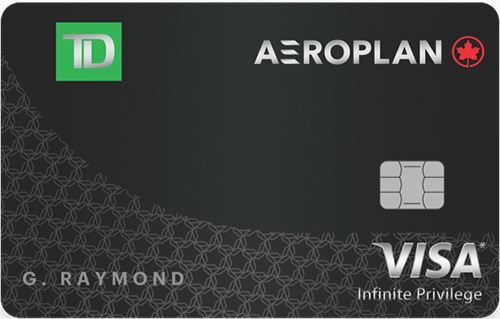
There are four main types of Aeroplan credit cards: co-branded (issued by American Express), Centurion Class (issued by Air Canada), Bronze Class (issued by WestJet), and Elite Class (issued by Air Canada). They’re a good choice if you want to earn frequent flier points and redeem rewards for free flights.
These usually offer high bonus rewards rates, which can help you earn savings or travel and cash rewards. This credit card issuer charges a foreign transaction fee but also provides valuable perks, like free airport lounge access or complimentary upgrades. Although few of them will be available for those with bad credit.
The World of Hyatt Credit Card
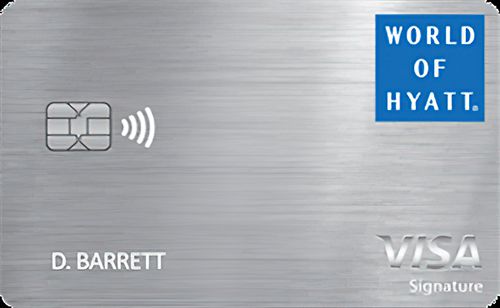
The World of Hyatt is a $95 annual fee travel credit card that charges no foreign transaction fee. The card is not available to customers with bad credit. But, if you’re interested in accessing incredible savings with a competitive APR (18.24%-25.24%) and a lower annual fee than average, this could be the one for you.
This credit card issuer offers many lavish benefits, including access to over 22,000 properties in more than 175 countries, up to 20% off at participating hotels worldwide, 4 bonus points per $1 spent at Hyatt hotels and resorts, and priority pass access to over 200 airport lounges worldwide.
Discover it® Student Cash Back
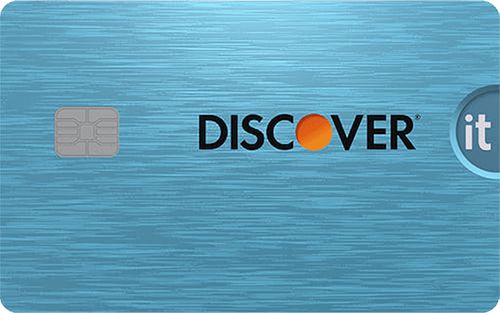
Discover it® Student Cash Back is a bonus rewards program that allows students to earn cash rewards on eligible purchases. They offer up to 3% cash back on eligible everyday purchases.
These include groceries (takeout and eligible delivery service), drugstores, gas stations, and savings on travel expenses (airfare, hotel stays, and transportation).
The Discover it® Student cash rewards credit card is among the best cash rewards today, even for those with bad credit. You’ll receive free access to FICO scores, a fee waiver for your first late payment, and 0% APR for the first six months.
Capital One Venture X Rewards Credit Card
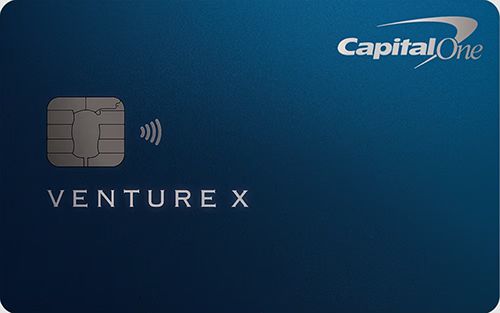
The Capital One reward perks make the annual fee of $395 worth it. It offers a sign-up bonus, which is worth up to $750. The cardholder gets unlimited 2X bonus points on eligible purchases, with APR from 19.99% to 26.99%, and there’s an additional reward of extra miles from purchases.
And in case of lost or damaged items, while traveling, Venture X cardholders can benefit from extensive insurance programs. As far as benefits go, there are anniversary perks (10,000 miles), access to Capital One’s Rewards program, no foreign transaction fees, and customers with bad credit can apply.
Chase Sapphire Preferred® Card
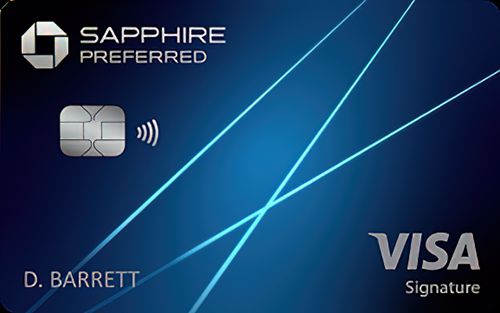
This credit card issuer is another solid choice if you’re looking to earn a sign-up bonus and enjoy perks like travel insurance, access to an Ultimate Rewards portal, and discounts at certain restaurants.
60,000 bonus points are awarded after you spend $4,000 in the first three months from account opening, making it a popular choice among travelers. If you redeem your cash rewards credit card, you will receive $750 toward travel. But there is a small foreign transaction fee.
How to Identify Which Type of Credit Card You Need?
The type of card you choose will depend on your preferences and financial situation. For example, you might be trying to build up your financial history, looking for a balance transfer card with no balance transfer fee, or wanting free access to the three major credit bureaus. Here are some helpful tips for identifying which card type can help improve your situation.
Cashback Сredit Сards
These cards typically offer a percentage of your purchase back as cash each time you use the card, which can be redeemed later. In the long term, this can add significant savings over time.
The average cashback credit card user receives around $278 in cashback each year. In addition to earning rewards, cashback cards have other benefits, such as low introductory interest rates and no annual fee.
While a cashback reward credit card is great for earning rewards, there are some important things to consider before signing up for one. First, you need to make sure the card you choose offers the right mix of rewards and features for your needs.
Student Credit Cards
Credit card issuers offer students free rewards cards. Once approved, offer the same benefits as other banks or credit unions, including interest-free balance transfers for up to one year and rewards programs.
They’re also a great way to help young people build their FICO history. These generally have lower APRs than those available to the general public and can be used anywhere you’d use your regular card.
However, be aware that student cards may not always have the same protections as those available to the general public. Although most come without annual fees.
Travel Credit Cards
These allow you to make purchases overseas without incurring any foreign transaction fees. While standard cards may charge you purchases or qualifying balance transfers, these usually come with a 0% introductory APR period and no annual fee to offset the costs of using your card abroad.
They offer special perks when you use their card to pay for travel-related expenses. These perks include flight discounts, rental cars, hotels, and more. As a result, they can be a valuable tool for people who regularly travel or want to do so in the future.
Business Credit Cards
Businesses typically use these business credit cards to pay for everyday expenses such as the cost of goods and services, payroll, taxes, and other business-related expenses.
They may have an annual fee, but many banks offer special features such as rewards programs and customer service perks. They are also crucial for businesses that need to make large purchases, such as equipment or office supplies.
This allows customers to charge these expenses directly to the business’s account and not have to worry about clocking them against the business’s personal account.
Rewards Credit Cards
When choosing your best rewards credit card, you usually earn bonus points that can be redeemed for benefits like free flights, movie tickets, and even gift cards and statement credit.
These are different from regular plastic in a couple of important ways. First, it has an annual fee. This covers the cost of maintaining the account and giving you access to the rewards system.
Second, it has a points or cash rewards system. You can earn bonus points by using your card, either by making purchases or by taking advantage of special promotions.
Secured Credit Cards
A secured credit card requires a direct deposit of some amount of money to be approved. This can be a cash deposit or an asset pledged as collateral against the limit on the card.
For example, a bank or credit union might require that you put down a $500 deposit before they will issue you a secured credit card.
Or, an individual might pledge their car as collateral. The customer must make good on the loan by fulfilling their obligations, or else the balance owed goes up, and interest charges are added on.
Low-interest Credit Cards
Low interest plastics typically have lower APRs than traditional ones. And they may charge no annual fee or only a small balance transfer fee.
Banks and financial institutions often offer them as promotional tools for customers with good financial history. So is not ideal for those with bad credit.
This card type can be beneficial if you need to carry a balance from time to time. There are times when even a small interest rate can add up quickly on unpaid balances. And when that happens, these can help you avoid this problem if you pay off your balance in full each month.
Which Card Best Meets Your Requirements?
Before you apply with a lender, take some time to think about what you’re hoping to get out of it. Are you looking for a low interest rate? Or rewards credit cards with bonus points or cash back (statement credits) on purchases? Each card has its unique perks, so it’s essential to make sure that the card you choose best meets your needs. Consider these aspects:
- Regular APR. You should look for cards with an extended grace period and a low or no balance transfer fee to maximize your savings. A regular APR is a percentage rate that reflects the cost of borrowing in relation to the amount borrowed.
- Annual Fee. An annual fee is generally charged per year, and it will be deducted from your available balance. As you access more money, you should pay off the entire balance at the end of every billing period to avoid interest charges.
- Minimum Deposit. If you have a bad credit score or a high likelihood of defaulting on the loan, you should aim to keep your minimum deposit amount as high as possible.
Other factors include card type (business or personal), limit, rewards offered, etc. For example, there are no balance transfer fee credit cards and no annual fee, while others charge annual fees and a foreign transaction fee.
What to Do After Receiving a Credit Card?
Getting a credit card is difficult, but keeping it in the proper form is just as tricky. It’s important not to mess up your borrowing history because it will be long, difficult, and possibly costly to rebuild.
After receiving one, the first thing to do is verify the validity of the card and the information provided by the bank. If there are any discrepancies, take action immediately. You should also check the terms and conditions of the card carefully.
Don’t Take Too Much Credit
To some, rewards credit cards seem a great way to build financial credibility and make money. However, there are a few things you need to keep in mind before taking on this type of debt.
First, don’t take on more than you can handle. By doing so, you could end up damaging your FICO score and causing yourself more problems in the long run. Second, only use your card for things you can pay off in full each month.
This will help you keep an eye on your spending and prevent you from over-extending yourself. Third, don’t take on too much debt if at all possible. This is because it could lead to financial difficulties later on down the road.
Study the Terms of the Credit Deal
This nifty bit of plastic is a loan and, as such, comes with specific terms that you need to understand before making the commitment. For example, you should know how much interest you’ll be charged for using the card.
Additionally, you should be aware of any fees associated with the card, such as an annual fee or a late payment fee. Also, before you sign anything, be sure to read the fine print.
There are some credit card companies that charge their customers based on their account limit, while others charge a fixed percentage off the base balance of their account. Before signing anywhere, know what type of plan you’re accepting.
Think Twice Before Taking a Loan
A loan is a great way to get the money you need, but it comes with some risks. First, if you take out a large loan like 300 dollar loan with bad credit and don’t have the money to pay it back, it can be challenging to find a job that will support your living expenses.
Second, taking out a loan reduces your cash reserves, so there’s less to cover unexpected expenses such as medical bills or car repairs.
One of the best ways to avoid these problems is to be sure you can afford to take on the loan before you apply. If you’re not confident that you’ll be able to handle the payments, think twice before applying. In addition, don’t apply for multiple loans at once, as this can complicate things.
Pay on Time
If you’re not making your payments on time, it could mean that you’re not taking your debt seriously. Paying late can lead to higher interest rates and fees, so don’t delay in paying your bills.
With the average card debt between $4,000- $6000, it’s easy to understand why paying late can have a big impact. Not only are you spending on interest and other fees, but also, by defaulting on a payment, you are risking damage to your FICO score.
The longer you go without paying off your balances, the more difficult it will be to get back on track. So, ensure you stay on top of your debt payments by making them on time each month.
Conclusion
Credit cards are a great way to build bad credit, get access to special perks, and earn rewards for your purchases. But there are a few things you should keep in mind before taking on this type of debt.
To begin with, they are not free money. You need to pay interest and fees on any money you borrow, and those costs can build up quickly. Too much debt can cause your FICO score to take a nosedive, making it more difficult to borrow in the future.
If you do decide to take out a credit card, make sure that you only use it responsibly and within your means. Using a card that only makes sense if you have a steady paycheck and a stable savings account is an excellent way to avoid negative consequences.
FAQ
What is the easiest credit card to get?
In a nutshell, the ones that are easy-to-get don’t require you to have a high FICO score to be approved for them. Some of these include Capital One Platinum, Petal 2 Visa, and rebuilding cards.
What credit card is the most beneficial?
How something benefits you will depend on what you need. For example, if you have a poor financial history, then unsecured cards will benefit you. Additionally, if someone travels a lot, then an Aeroplan card with travel rewards will benefit them.
What type of credit card is good for beginners?
In case of irregular income and occasional balance carries, you would be able to pay off a high-interest debt interest-free through balance transfer credit cards. If you plan to use your plastic for emergencies, you might be interested in a card offering an introductory 0% APR and long-term low interest.
